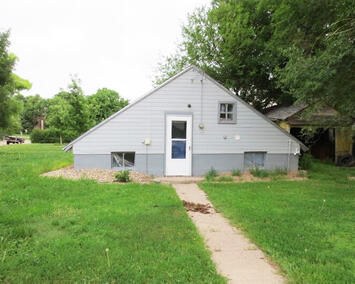
My mother-in-law was born in a small town in rural Nebraska in 1941. Her father was oversees fighting World War II for the first few years of her life, so she and her mother lived on her grandparents’ farm in a society absent of young men. When her father returned home after the war he took a job at the post office and set about building a home for the family which quickly included three more children. In those early days the lawn was actually a highly productive vegetable garden that generated enough surplus in summer and fall to be put by for winter and spring. People raised on farms had all the required construction and preservation skills to provide for their own essentials. Critically, our institutions generally didn’t offer much resistance.
The late 1940s were a transitional period when the old iterative ad hoc era was coming to an end, but the mass produced Levittown version of suburbia hadn’t yet emerged. People were still operating largely under the previous development model of incremental modest self built homes that grew and evolved over time. The “minimum viable product” concept was alive and well. Land was purchased with cash. The basement was constructed first, also on a cash basis, and fit with a bare bones kitchen and bath. That space was occupied for a few years until more cash could be pulled together to build the ground floor. In time there might be a second above ground story as well as horizontal additions. To the extent that there was any debt associated with any of this work it was short term and typically borrowed from family or friends. Most of the work was done by the home owners themselves.
Next door the neighbors had clearly taken the same path with their property. Today just about every part of this plan is illegal, culturally unacceptable, and economically unwieldy in most locations. These basement homes are too small to be approved by local authorities. Minimum square footage requirements have been put in place to filter out the riffraff who can’t afford larger homes. Most municipal codes insist on two off street covered parking spaces which, in this case, would be the same size and likely the same cost as the homes themselves. Growing vegetables on what should be a lawn is verboten in many locations, if not by the government than by private association bylaws. And building anything in stages is frowned upon since the present custom is to create a finished product all at once and never change any part of it without interacting with a host of special committees and review boards. I have no doubt that the four children, now in their 70s and 80s, who spent their early years in the basement house would never tolerate such activity in their own neighborhoods today. It’s just too trashy and sets the wrong tone.
But here we are seventy odd years later and neither of these homes have ever received their upper floor additions. I asked why and was told that by the 1950s it was clear that the national economy had re-centered away from agriculture and small farm towns to a handful of big cities. The basement house was sold for about what it cost to build, the family packed up their belongings, and they moved to the coast - first to Seattle, then to Los Angeles. The old town never grew beyond that 1950 peak, and was actually lucky to avoid complete depopulation and abandonment as was the case for many other rural settlements. No doubt, permanently half finished homes like these were one of the reasons incrementalism was eventually outlawed.
Read the rest of this piece at Granola Shotgun.
Johnny Sanphillippo is an amateur architecture buff with a passionate interest in where and how we all live and occupy the landscape, from small rural towns to skyscrapers and everything in between. He travels often, conducts interviews with people of interest, and gathers photos and video of places worth talking about (which he often shares on Strong Towns). Johnny writes for Strong Towns, and his blog, Granola Shotgun.












